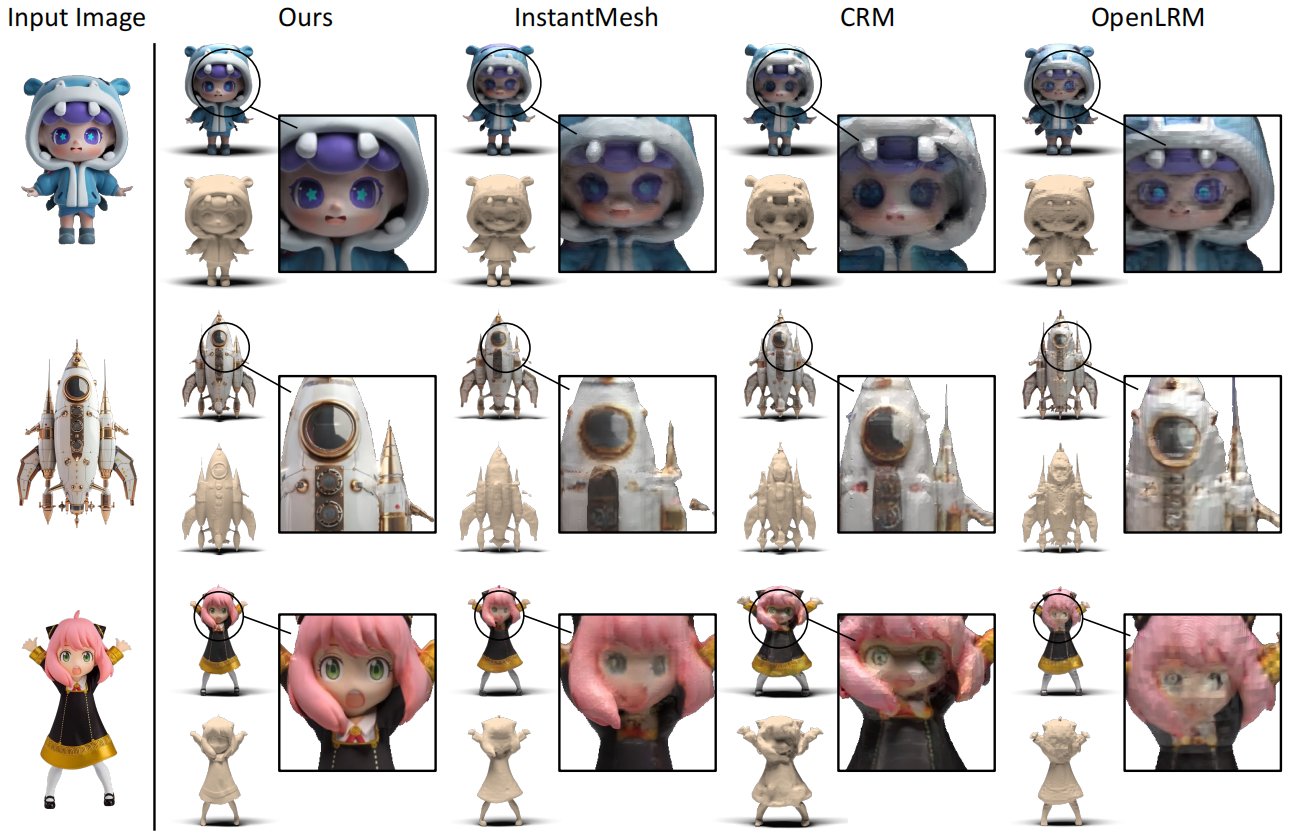In this work, we introduce Unique3D, a novel
image-to-3D framework for efficiently generating high-quality 3D meshes
from single-view images, featuring state-of-the-art generation fidelity
and strong generalizability. Previous methods based on Score
Distillation Sampling (SDS) can produce diversified 3D results by
distilling 3D knowledge from large 2D diffusion model, but they usually
suffer from long per-case optimization time with inconsistent issues.
Recent works address the problem and generate better 3D results either
by finetuning a multi-view diffusion model or training a fast
feed-forward model. However, they still lack intricate textures and
complex geometries due to inconsistency and limited generated
resolution. To simultaneously achieve high fidelity, consistency, and
efficiency in single image-to-3D, we propose a novel framework Unique3D
that includes a multi-view diffusion model with a corresponding normal
diffusion model to generate multi-view images with their normal maps, a
multi-level upscale process to progressively improve the resolution of
generated orthographic multi-views, as well as an instant
and consistent mesh reconstruction algorithm called
ISOMER, which fully integrates the color and geometric priors
into mesh results. Extensive experiments demonstrate that our Unique3D
significantly outperforms other image-to-3D baselines in terms of
geometric and textural details.
 Pipeline of our Unique3D. Given a single wild image as input, we first generate four orthographic multi-view images from a multi-view diffusion model. Then, we progressively improve the resolution of generated multi-views through a multi-level upscale process. Given generated color images, we train a normal diffusion model to generate normal maps corresponding to multi-view images and utilize a similar strategy to lift it to high-resolution space. Finally, we reconstruct high-quality 3D meshes from high-resolution color images and normal maps with our instant and consistent mesh reconstruction algorithm ISOMER, which is a robust multi-view reconstruction method directly deforming the mesh and can efficiently reconstruct mesh models with millions of faces.
Pipeline of our Unique3D. Given a single wild image as input, we first generate four orthographic multi-view images from a multi-view diffusion model. Then, we progressively improve the resolution of generated multi-views through a multi-level upscale process. Given generated color images, we train a normal diffusion model to generate normal maps corresponding to multi-view images and utilize a similar strategy to lift it to high-resolution space. Finally, we reconstruct high-quality 3D meshes from high-resolution color images and normal maps with our instant and consistent mesh reconstruction algorithm ISOMER, which is a robust multi-view reconstruction method directly deforming the mesh and can efficiently reconstruct mesh models with millions of faces.
 Comparison. We compare our model with InstantMesh, CRM and
OpenLRM. Our models generates accurate geometry and detailed texture.
Comparison. We compare our model with InstantMesh, CRM and
OpenLRM. Our models generates accurate geometry and detailed texture.